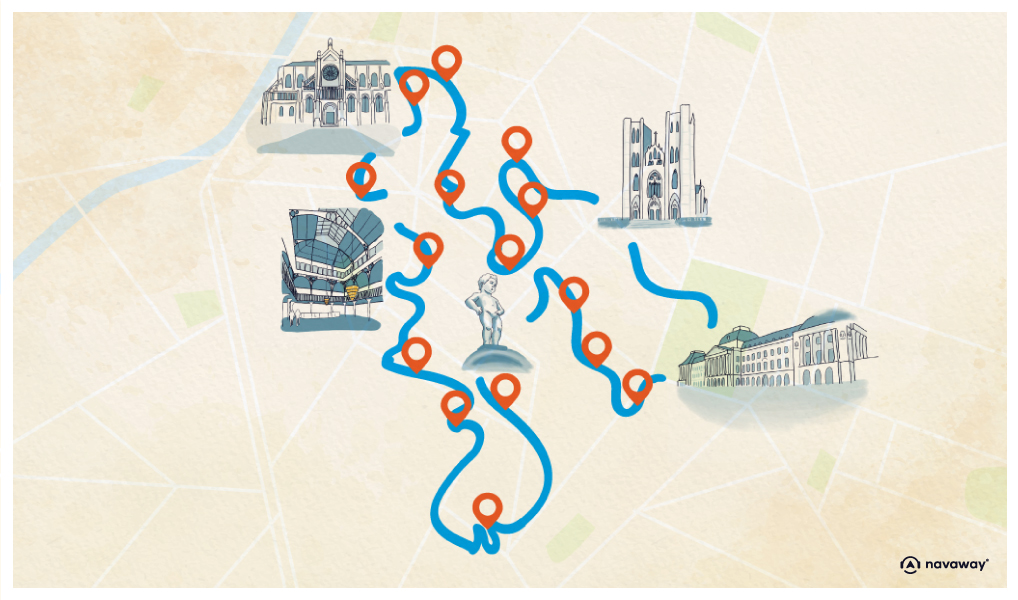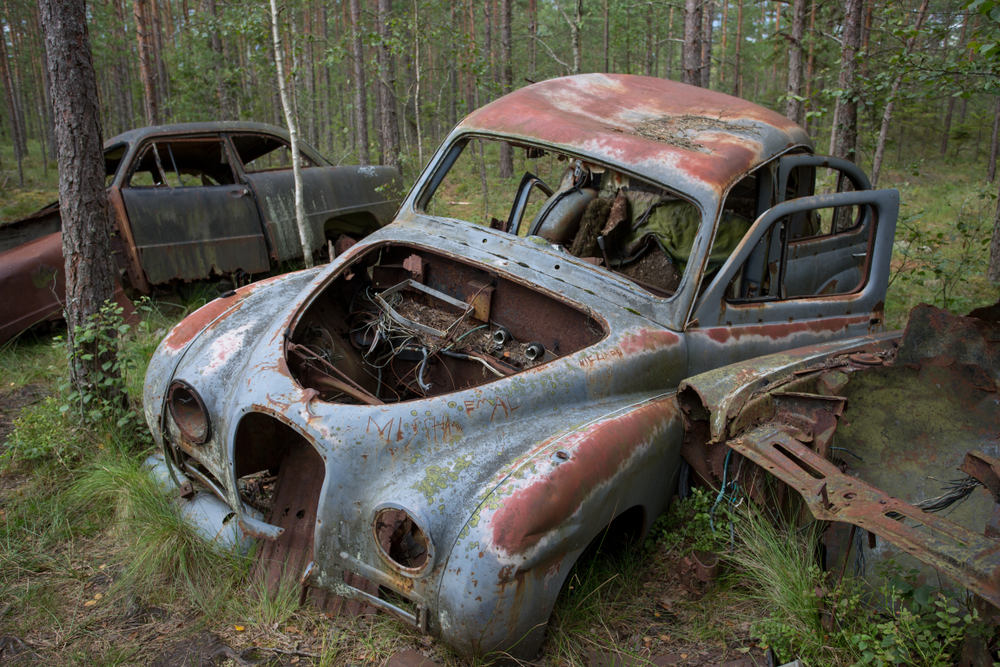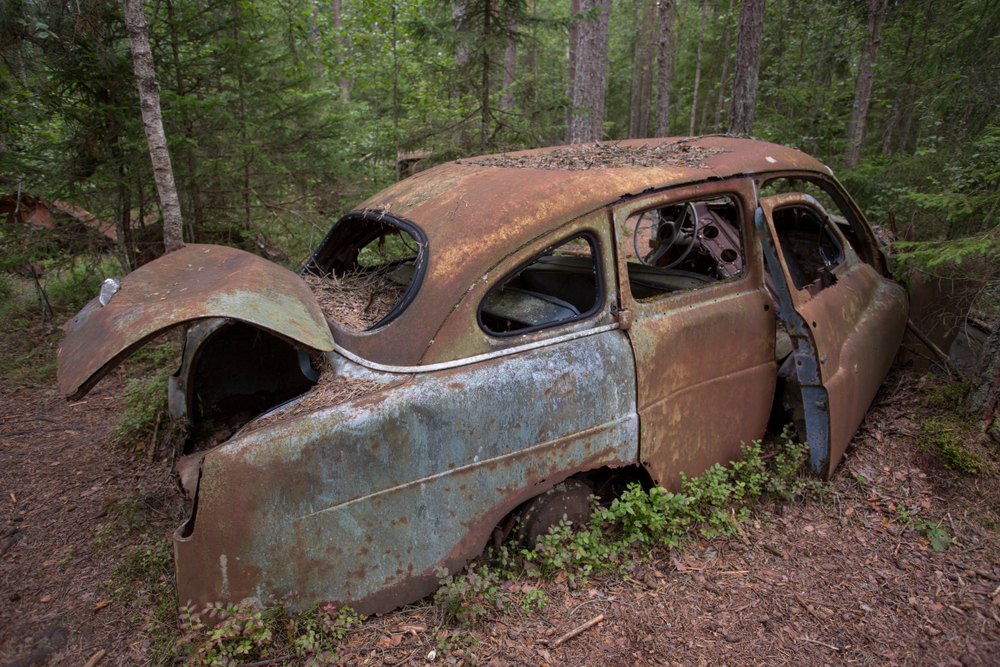
The mysterious car cemetery at Châtillon, Belgium

In the heart of the Belgian forests, in the small municipality of Châtillon in the province of Luxembourg, lay one of the most mysterious and fascinating sights in Europe: a huge cemetery of abandoned cars. This enigmatic site, which has travelled the world thanks to photographers and urban exploration enthusiasts, tells a disturbing story combining legends of war, historical reality and contemporary mystery.

1. The mysterious origins of the Châtillon car cemetery

The story of the mysterious car graveyard at Châtillon begins in the years following the Second World War. According to the most widespread urban legend, these hundreds of American vehicles were abandoned by soldiers stationed in Belgium as part of NATO after 1945. Unable to repatriate their personal cars to the United States because of the prohibitive cost of shipping, these soldiers chose to hide them in this remote forest in the Belgian Ardennes, perhaps hoping to recover them one day.
However, local residents dispute this romantic version of events. According to them, the site is more prosaically a former dumping ground for cars manufactured after the war and abandoned by private individuals or local dealers. This less poetic explanation in no way detracts from the spectacular nature of the site, which at its peak contained no fewer than 500 vehicles from different eras.
See also the Brussels guide:
- Brussels in 1 day: 25 things to do and see on foot
- Top 6 things to do in Brussels
- 20 not-to-be-missed excursions around Brussels
2. The location of the abandoned car cemetery
The mysterious Châtillon car cemetery was located in the Châtillon section of the commune of Saint-Léger, in the province of Luxembourg in Wallonia. To be more precise, it was located in a private forest near the rue d’Ahérée, in south-east Belgium, not far from the French border. This region of the Belgian Ardennes, known for its dense forest landscapes and its history linked to the old forges, provided the perfect setting for this unusual spectacle.
Saint-Léger and the surrounding area, including Châtillon and Meix-le-Tige, lie at the heart of an impressive forest setting where the past was closely linked to the history of forges and metallurgy. This historic industrial region perhaps goes some way to explaining why such a car junkyard was able to spring up in these remote regions.
Download the audio tour to discover Brussels on foot and on your own
Although Châtillon is located in a remote part of the Ardennes, the Belgian capital Brussels remains the ideal gateway for exploring Belgium and its mysteries. Thanks to our audioguided itinerary, discover the cultural and historical wealth of Brussels before setting off to discover the country’s hidden secrets. The Navaway application allows you to visit Brussels independently and interactively, providing an excellent basis for your exploration of Belgium.
3. The height of the car graveyard: 500 ghost vehicles
At its peak in the 1980s and 1990s, the mysterious car cemetery at Châtillon comprised four separate sites, together housing almost 500 abandoned vehicles. These cars, mainly American models from the 1950s to the 1970s, created a striking sight amidst the vegetation that was gradually taking over. Among the most popular makes were Fords, Chevrolets, Buicks and other American manufacturers of the period.
The cars, abandoned for decades, presented a fascinating apocalyptic picture. Rusted and overgrown with moss and creepers, they seemed to be an integral part of the forest. Some were piled on top of each other, others lined up like an eternal traffic jam, creating an atmosphere worthy of a post-apocalyptic science fiction film. This surreal scene attracted photographers, urban explorers and the curious from all over the world, transforming this forgotten place into a veritable underground tourist attraction.
4. Global discovery and the enthusiasm of urban explorers
With the advent of the internet and social networking, the mysterious car graveyard at Châtillon exploded in popularity. The first spectacular photographs, massively circulated in the early 2000s, went around the world and turned this secret site into a viral phenomenon. From professional photographers to urbex enthusiasts, everyone flocked to immortalise this unique sight in Europe.
The most striking images showed whole queues of abandoned cars, as if frozen in an eternal traffic jam in the heart of the forest. Nature had reclaimed its rights: trees growing through the open bonnets, moss covering the bodywork, creepers twining around the bumpers. This symbiosis between the abandoned car industry and wild vegetation created a romantic, melancholy aesthetic that fascinated audiences around the world.
5. Environmental issues and private property
Despite its aesthetic and tourist appeal, the mysterious car graveyard at Châtillon was posing serious environmental problems. Automotive fluids (engine oil, coolant, residual petrol) were slowly leaking into the forest floor, risking contamination of the water table and the local ecosystem. Batteries, tyres and other toxic components also posed a threat to the surrounding flora and fauna.
What’s more, the site was located on private property, making it difficult for visitors to gain legal access. The landowner, faced with a constant influx of urban explorers and curious onlookers, had to deal with repeated damage and intrusions. This uncomfortable situation for all concerned precipitated the end of this legendary site.
6. Progressive looting and collectors
Over the years, the mysterious car graveyard at Châtillon has been gradually pillaged, considerably reducing its appeal. Collectors of old car parts, attracted by this open-air goldmine, have come to recover the most precious items: steering wheels, headlights, hubcaps, brand emblems and other vintage accessories that are highly sought-after on the car restoration market.
This systematic spoliation emptied the vehicles of their most interesting components, leaving behind increasingly dilapidated carcasses. The best-preserved cars were even completely removed by enlightened enthusiasts, gradually reducing the number of vehicles on the site. From the original 500 cars, only around a hundred remained in the early 2000s, and then only a few dozen before the site disappeared for good.
7. The end of an era: cleaning up in 2010
The story of the mysterious car cemetery at Châtillon came to an end in 2010, when the authorities ordered a complete clean-up of the site for environmental reasons. The landowner, threatened with a fine of €250 for each abandoned vehicle, was forced to clear the last remaining carcasses from his forest.
This decision, although justified from an ecological point of view, marked the definitive end of a phenomenon that was unique in Europe. The last cars were scrapped or collected by collectors, wiping out forever this extraordinary spectacle that had captured the imagination of millions of people around the world. Today, only photographs bear witness to the existence of this legendary site.
8. The site’s cultural and photographic heritage
Although the mysterious car graveyard at Châtillon has disappeared, its cultural legacy lives on in the thousands of photographs that continue to circulate on the Internet. These iconic images symbolise the contemporary fascination with abandoned places and the melancholic beauty of industrial decay. The site has become a benchmark in the world of urban exploration and derelict photography.
The professional and amateur photographers who have immortalised this place have created a veritable art gallery testifying to nature’s ability to reclaim its rights over human creations. These works continue to inspire artists, writers and film-makers, fuelling the collective imagination of lost civilisations and contemporary mysteries.
9. Châtillon today: what remains of the mystery?
Today, Châtillon has regained its former tranquillity. The forest that once sheltered the mysterious car cemetery has regenerated naturally, gradually erasing the traces of this car occupation. Only a few insiders still know the exact location of this legendary former dump, and the vegetation has reclaimed its rightful place in the wilderness.
For visitors wishing to discover this region of the Belgian Ardennes, Châtillon now offers other, more conventional tourist attractions. You can visit the Fourneau David, a testimony to the local steel industry, as well as the Fountain of the Virgin. The region retains its authentic charm and invites you to discover the industrial and natural history of Wallonia.
10. Visiting the region: from Châtillon to Brussels
For lovers of history and mystery, the Châtillon region is well worth a visit during your stay in Belgium. Located around 200 kilometres south-east of Brussels, this Ardennes region offers magnificent forest landscapes and a fascinating industrial heritage. The Navaway itinerary allows you to discover the wonders of the Belgian capital before exploring the secrets of deep Wallonia.
Discovering Brussels is an excellent starting point for understanding Belgian history and its contemporary mysteries. The Navaway app guides you through the 25 must-see places in the capital, preparing you to better understand the legends and realities that dot Belgian territory, such as the mysterious car cemetery in Châtillon.
In conclusion, the mysterious car cemetery at Châtillon remains one of the most fascinating phenomena in contemporary Belgium. Somewhere between urban legend and historical reality, this exceptional site has left its mark on the collective imagination and continues to fuel dreams of exploration and discovery. Although it has now disappeared, its memory lives on in the world’s photographic memory and in the hearts of all those lucky enough to have discovered it. To extend your exploration of Belgium’s mysteries, take a guidedtour of Brussels and discover the hidden treasures of this country of a thousand surprises.
Frequently asked questions
Does the Châtillon car cemetery still exist?
No, the mysterious car cemetery at Châtillon was completely cleared in 2010 for environmental reasons. The last vehicles were removed by the landowner on the orders of the authorities, putting a definitive end to this unique sight in Europe.
Where exactly was the car graveyard?
The site was located in a private forest near the rue d’Ahérée, in the Châtillon section of the municipality of Saint-Léger, in the province of Luxembourg in Wallonia (Belgium). It was in the south-east of the country, not far from the French border.
How many cars did the cemetery hold at its peak?
At its peak in the 1980s and 1990s, the mysterious car cemetery at Châtillon contained around 500 abandoned vehicles spread over four separate sites. These cars, mainly American models from the 1950s to the 1970s, created a striking spectacle in the heart of the Ardennes forest.
What is the true origin of these abandoned cars?
There are two opposing theories: urban legend has it that cars were abandoned by American soldiers after the Second World War, while local residents talk of a former car dump used after the war. The truth is probably a mixture of these two explanations, with vehicles abandoned at different times for different economic reasons.
200 audioguided tours for cities all around the world
Download
